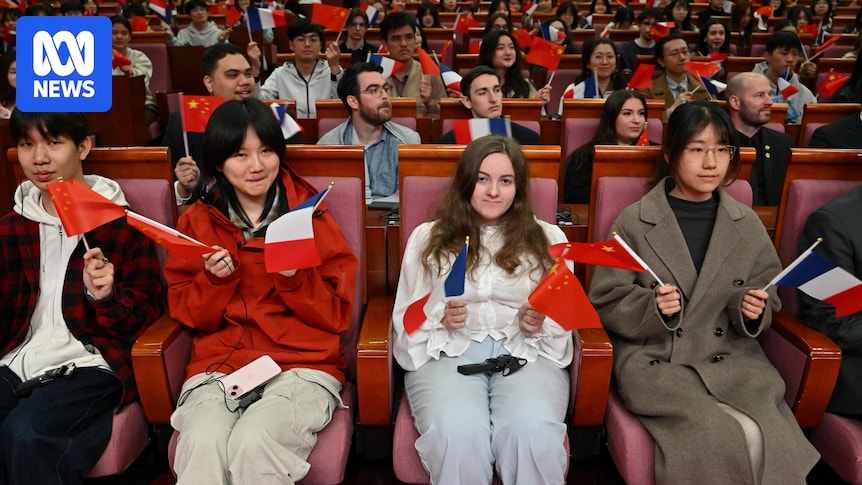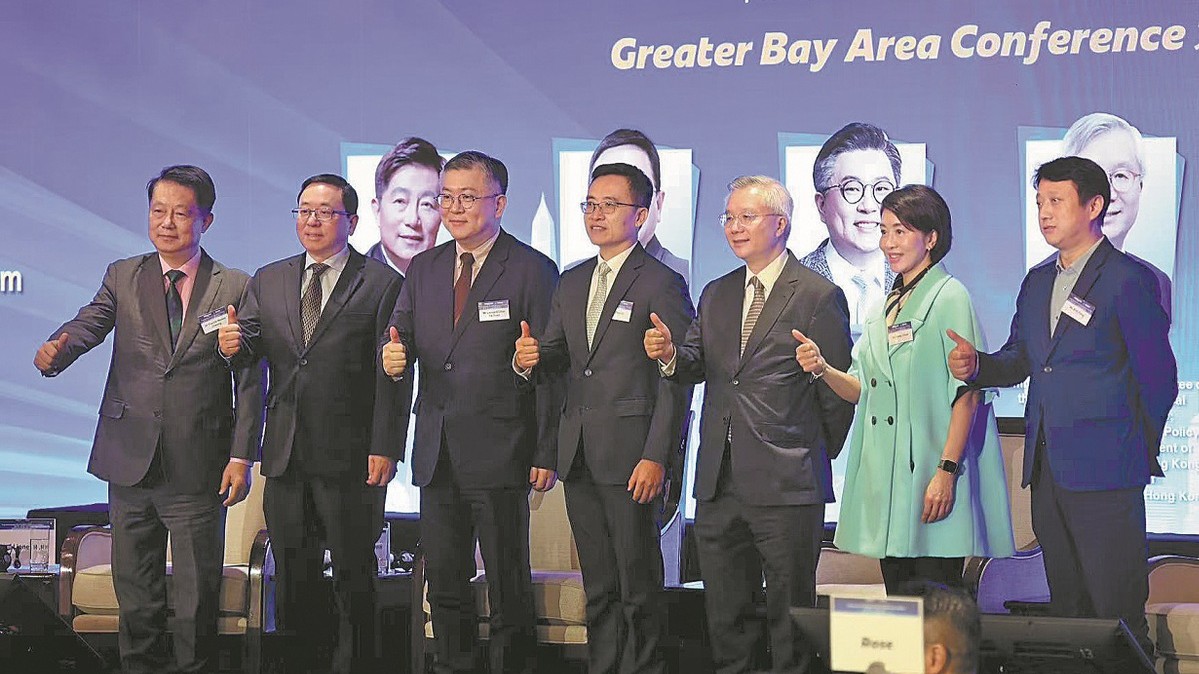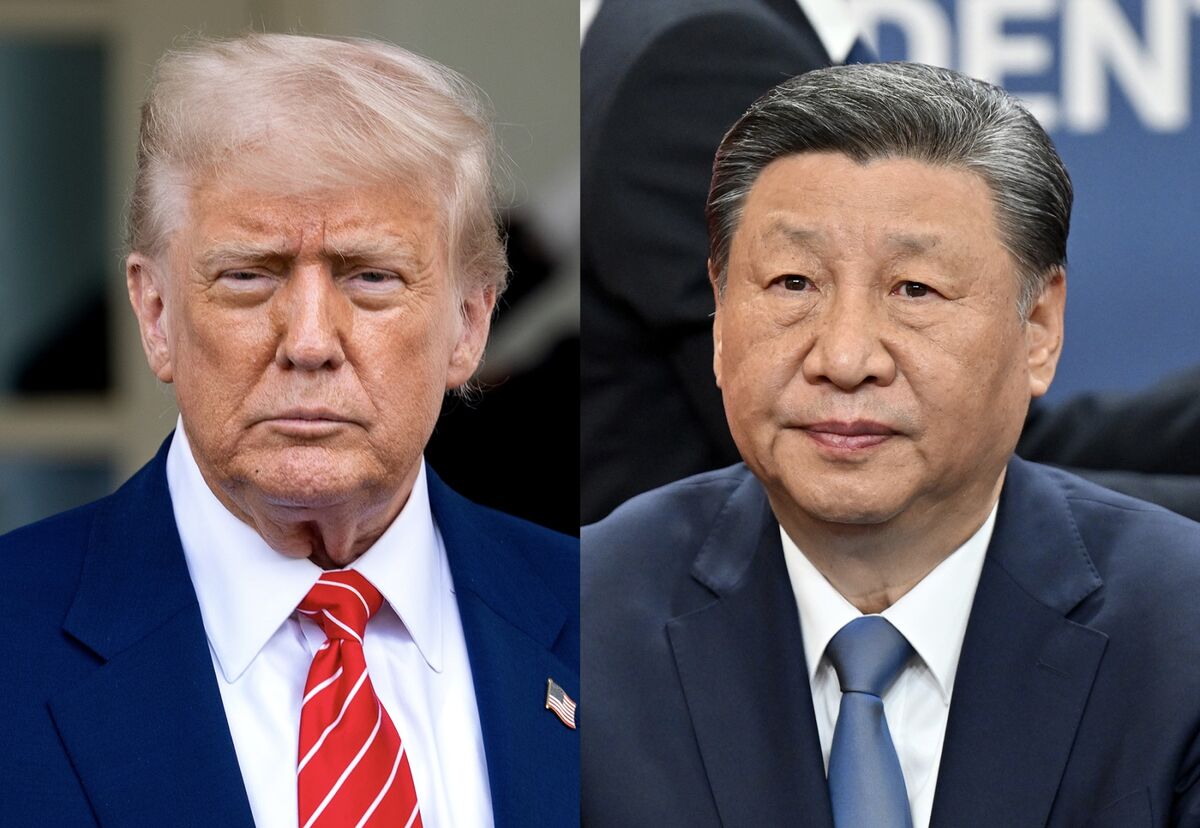Beijing is launching a charm offensive aimed at the younger generation of Australians — because shaping minds today means shaping alliances tomorrow.
China wants to be seen differently on the global stage: more open, more modern, and less threatening.
For President Xi Jinping, changing how the world sees China is now a national priority.
And in a new phase of China–Australia diplomacy, he’s targeting young people — including teenagers and university students — to help achieve it.
In a joint statement following Chinese Premier Li Qiang’s bilateral meeting with Prime Minister Anthony Albanese in the Great Hall of the People last week, both sides agreed to “welcome more young Australians travelling to China” through Beijing’s youth exchange programs.
Chinese Premier Li Qiang met with Anthony Albanese during his high-profile visit where they agreed for more young Australians to visit China. (AP: Sakchai Lalit)
It was a warm and carefully worded gesture, but one with political weight that largely went unnoticed in Australian media.
Albanese’s high-profile visit followed the diplomatic thaw initiated during his 2022 meeting with Xi in Bali.
Since then, China has gradually rolled back trade sanctions, restored high-level dialogue, and signalled a desire to rebuild ties with Canberra, especially through so-called people-to-people connections.
Among them, youth exchanges now sit at the centre of Beijing’s soft power strategy.
Why do these programs matter?
China’s approach to youth diplomacy isn’t new. What is new is the scale and the strategic intent.
In late 2023, Beijing launched the Young Envoys Scholarship (Y-E-S) program with the United States, aiming to bring 50,000 young Americans to China over five years.
The Chinese government covers flights, accommodation, meals, and excursions. Delegates visit major cities, universities, and cultural landmarks, all curated to present a positive image of China.
That model is now quietly being extended to other countries, including Australia, following the joint outcome statement from Albanese and Li.
While no formal quota has been announced here, Beijing’s message is clear: it wants more young Australians on Chinese soil, and it is willing to pay for it.
For Xi, the rationale is simple. Youth exchanges are a way to humanise China, counter negative global narratives, and cultivate goodwill.
They’re also a low-risk influence tool — less politically sensitive than trade negotiations, and less confrontational than security issues.
For Australia, there are potential benefits. These programs could help young Australians develop Asia literacy, Mandarin skills, and a deeper understanding of regional dynamics.
And at a time when both countries are looking to deepen trade and investment ties, cultural exchanges offer a relatively safe and neutral space for engagement.
But the structure of these programs, and who controls the narrative, matters.
What’s the downside?
Critics argue that these exchanges are less about mutual learning and more about message management.
The 50,000-person program in the US has already attracted scrutiny. Participants have reported being steered away from politically sensitive topics, warned about what to post online, and shown a scripted version of Chinese life.
Many of these programs are run under the supervision of the Chinese Communist Party’s International Liaison Department — the same agency responsible for managing foreign political relationships. That adds another layer of complexity.
These aren’t simply educational visits; they’re part of a coordinated influence campaign.
Young Australians expect transparency and can sense when they’re only being shown what a government wants them to see. (ABC News: Nick Haggarty)
For Australian participants, questions remain about how authentic the experience would be, and whether the trips are designed more to impress foreign visitors or to satisfy political superiors in China.
Canberra’s role in shaping the agenda is also unclear. There’s little space for negotiation, but with a strong bilateral relationship and a firm stance, meaningful cooperation isn’t out of the question.
At the very least, these trips shouldn’t resemble political theatre more than cultural exchange.
Australia hasn’t signed up, and that’s telling
Unlike the United States, Australia hasn’t agreed to a 50,000-person quota — and that’s deliberate.
Canberra is proceeding with caution. Accepting large-scale, state-sponsored trips risks triggering political backlash, especially amid heightened concerns around foreign interference.
There’s also a deeper challenge. China may excel at hospitality, but it still struggles to understand what Western youth want to engage with.
Promoting Chinese civilisation is one thing. But doing it through tightly scripted itineraries, with little space for questions or dissent, can come across as propaganda.
Since 2022, Beijing and the Albanese government have been quick to repair ties. (China Daily via Reuters)
The problem lies in the system. Local authorities running these programs are often focused on political safety — ensuring there’s no controversy, no disruption, and no deviation from the official message.
A “successful” trip is one without incident, not necessarily one that fosters curiosity or connection.
But in Australia, openness matters. Young people here expect transparency and honesty. They can sense when they’re only being shown what a government wants them to see.
The soft power frontier
The youth exchange proposal arrives in a sensitive context, including ongoing public scrutiny over China’s Confucius Institutes, which aim to promote Chinese language and culture in foreign academic institutions but have been criticised for advancing Beijing’s political agenda.
The Albanese government is working to manage a complex relationship with China that involves strategic competition, economic interdependence, and stark differences in political values.
Since Labor returned to power in 2022, Beijing has moved quickly to repair ties. The Bali meeting between Xi and Albanese was a turning point.
Both leaders reaffirmed their commitment to the Comprehensive Strategic Partnership (CSP) as a framework for cooperation.
People-to-people links — including tourism, education, and cultural diplomacy — have been central to that effort.
But there are clear limits. As both countries begin the second decade of the CSP, Canberra is unlikely to embrace large-scale youth exchanges without tight controls and independent oversight.
Australian officials know the risks. Letting Beijing fund large student delegations could spark a new wave of controversy, not just over China, but over how Australia protects its democratic values.
What’s more likely is support for smaller, transparent, independently managed programs, potentially involving universities or NGOs, that include reciprocal visits, open discussion, and space for critical thinking.
Ultimately, the real question is whether engagement can happen on Australia’s terms.
Loading
Xi Jinping has long called for China to “tell its story well.” Youth exchanges are clearly a part of that effort.
But if Beijing wants to win hearts and minds abroad, it will need to do more than offer hospitality and photo ops. It will need to allow space for disagreement, nuance, and truth.
For China, this charm offensive could help rebuild trust — or it could backfire if it’s seen as too controlled.
For Australia, the opportunity lies in encouraging programs that promote curiosity, not compliance.
If done well, youth exchanges could help bridge gaps and foster future leaders with a deeper understanding of both countries.
If done poorly, they risk becoming yet another battleground in a fragile relationship.


